|
Detail of Tonisborg Dungeon One of our previous discussions was about keeping players scared: http://www.secretsofblackmoor.com/blog/what-if-you-arent-playing-the-game-right-or-on-the-origin-of-the-dungeon-adventure-game-as-the-first-gothic-horror-rpg Now let's justify making them dead! We often get Dan Boggs on the phone and pore over artifacts together - long distance. Dan did some extensive blog posts on Greg's Tonisborg dungeon: http://boggswood.blogspot.com/2018/01/the-lost-dungeon-of-tonisborg.html We recently had yet another long distance examination of Greg Svenson's Maps. What Dan found most interesting about this underworld is just how much of a killerl it is. We'd noticed this as well and wanted to examine how this is different from contemporary games. As fans of traditional D&D play we tend to view any campaign with lots of high level player characters as too much of an instant gimme campaign, we can't fathom how an entire party was able to reach their god-like levels of experience. Screen shots taken from dnd @ https://www.cyber1.org Here is what Gary Gygax had to say on the subject of character levels just over a year after D&D was published: "It is reasonable to calculate that if a fair player takes part in 50 to 75 games in the course of a year he should acquire sufficient experience points to make him about 9th to 11th level, assuming that he manages to survive all that play. The acquisition of successively higher levels will be proportionate to enhanced power and the number of experience points necessary to attain them, so another year of play will by no means mean a doubling of levels but rather the addition of perhaps two or three levels. Using this gauge, it should take four or five years to see 20th level. As BLACKMOOR is the only campaign with a life of five years, and GREYHAWK with a life of four is the second longest running campaign, the most able adventurers should not yet have attained 20th level except in the two named campaigns. To my certain knowledge no player in either BLACKMOOR or GREYHAWK has risen above 14th level." So how are these players able to get such high levels so quickly and easily? It seems Gary was somewhat confounded by this himself. He goes on to discuss mortality within dungeon games: "…if a 33rd level wizard reflects a poorly managed campaign, a continuing mortality rate of 50% per expedition generally reflects over-reaction and likewise a poorly managed campaign. It is unreasonable to place three blue dragons on the first dungeon level, just as unreasonable as it is to allow a 10th level fighter to rampage through the upper levels of a dungeon rousting kobolds and giant rats to gain easy loot and ex- perience. When you tighten up your refereeing be careful not to go too far the other way." From: D&D is Only as Good as the DM by Gary Gygax The Strategic Review April '76 V.2 N.2 Plato: Maze War being played (1973) It's likely more ink has been spilled on this subject than all the orc blood in all the combined dungeons since the invention of D&D. Players may not worry about this issue, but many DM's do. We can recall wandering into our local game store one day in 1979, and overhearing a mother who was there shopping for her son, brag about how he was a 20th level Wizard. Our games had not seen anyone rise higher than 9th level. In fact, our dungeon parties were always an awkward mix of 1st levels, a couple 5-6th levels and the one thief who had gotten to 9th level. It didn't hurt that he had found a ring of invisibility so he could do solo dungeon raids easily on his own, by going around unseen and picking and choosing what to fight and what to bypass. This is an old problem. Yet the inflation of character levels can also be connected to how computer games have evolved as well. The following article cropped up in the gamer sphere and it got us thinking lot about game design as it relates to play balance and difficulty of play. While people often consider the impact of D&D on digital gaming, no one seems to be looking at the impact video games have had on D&D; and there are great parallels between the two. And while we often see people going off at the mouth about how D&D cured everything from mental illness to cancer, in regard to computer games-- sorry, but computer games came first. when we see D&D experts claim that D&D was what influenced computer games, we just grimace and think -- they aren't digging deep enough. In this blog article by Jon Paul Dyson, you can see many claims that fall into the usual assumptions about D&D and computer games/video games. What is most evident is that this writer has no clue about early computer game history. http://www.museumofplay.org/blog/chegheads/2011/05/the-influence-of-dungeons-and-dragons-on-video-games The author reveals that he does not have a long memory either, because he begins with the Holmes Blue Book D&D set, which first appears in 1977. We will forgive him for his romantic dalliance with his own personal experience, as some of our own articles can lean a bit on the smarmy reminiscence side of things too. What is more important is that unless you were there, you're likely to have very little background on computer games. You won't be able to see the deeper connotations of how the two games show similar evolutionary paths. And you won't be thinking that perhaps the two are influencing each other in equal portions. (By now you're wondering what the heck computer games have to do with D&D. Well, we're sort of circling like hawks right now, so just follow with us on this, and we promise we'll make some kind of grand connection later on.) Plato Terminal and keyboard showing the Orange Glow of the Plasma Display While we won't go into every detail of the origin of computer games, we can talk about the place where many of these games originate, and that is on the PLATO mainframes in the 70's. Check this out: https://en.wikipedia.org/wiki/Maze_War Ok, so by 1973 there is a maze game on PLATO. If the image we've found is an original, this makes 1st person perspective an early innovation as well. (Wikipedia is a sloppy source, so the image may be out of context a bit.) Or, we can look at SPASIM (1974). It's a Star Trek simulator complete with wire frame vector graphics. Having played it as 13 year olds decades ago, we can say that it was incredible, even if it took about an hour to find an enemy ship while playing the game. Yet it clearly is not being influenced by D&D at all. At the same time it's well documented that D&D computer games originate on PLATO in 1974. That is the first obvious link -- so lets dig some more and see what happens. We have two types of games: Computer games and Paper D&D. They originate separately, yet eventually there is likely cross talk between the two types of games and members of their communities. This cross talk seems very direct. Lets consider that CDC had its headquarters in, of all places -- Minnesota! We can link the two communities even more via one of the Blackmoor Bunch: Fred Funk. Fred worked as a security guard at CDC. Over time he was able to acquire his own PLATO terminal, so he could access the system from home. Chirine ba Kal described being at Fred's house back in the 70's/80's and taking turns playing some of the early games. Though not related to this discussion, this is a fun place to explore Chirine's miniatures and gaming stories. chirinesworkbench.blogspot.com A Plato mainframe was also located at CERL in Champaign Urbana. Interestingly. many of the big players during the independent game revolution of the '70's and '80's were in central Illinois. You can place Judges Guild Game Company, physically, very near to the epicenter of this computer game boom that is happening at the same time. This can be said for Game Designers Workshop too, as they were in Normal Illinois. Head to Head Combat in Empire (1974) Below is a cut paste from the Wikipeida page on the PLATO computer system: (https://en.wikipedia.org/wiki/PLATO_(computer_system) Look closely and you'll find links to the first D&D computer games: Pedit5, and dnd. Wikipedia can be tricky at times. While Pedit gets the attribution of first D&D computer game, it comes up with a 1975 dating, while dnd is dated in 1974. Hmmm... Innovation[edit] PLATO was either the first or an earlier example of many now-common technologies.
Panther was a head to head multi player predecessor of Battle Zone Hopefully some of the links work. We just want to show just how much game design was being done by 1973 and on. It's actually quite staggering. The thing one finds in both D&D and computer games early on, is that they are both really difficult to learn. Anyone who was playing D&D in the early days will attest to how poorly explained some rules sections can be. We just had a huge throw-down arm wrestling cum WWF battle with Dan Boggs about the length of a combat round in OD&D. Some of the action has been preserved on VHS tape: www.youtube.com/watch?v=q91znfQqpGw Dan left with a bloody nose, yet fully confident he was the winner. We left with black eyes, but we know we're right, so whatever DAN! Just learning the interface on early computer games was hard. Plato's Empire game (https://www.youtube.com/watch?v=vMPC1eG5cko) can take a month just to learn the keystrokes. Play balance wasn't very good to players in the early days either; if you played early computer games, you know how lethal they could be. Yet the market dictates what the games should be, and over time we've arrived at the single player story games, where even a young person can survive and learn to play by starting on a low level setting and working through the entire game, map by map. We didn't get level saves back then either. In fact, computer game history is littered with the wreckage of beautifully coded, accurately researched, and perfectly implemented simulations of all kinds. We still whimper at the loss of our Amiga computers and the Action Stations! naval game. *SIGH* The problem is, they made these games so real that hardly anyone could play them and win, much less survive for very long. People want to win games. You can trace the level of difficulty for computer games as a factor of consumer buy in. If the game it s too hard, you reduce the number of people who are willing to purchase your product. These days, games are designed to be sort of stupid. Lots of effort goes into making sure everyone is going to love the new whatever; so the game has to be easy. One should also consider how each game rewards a player, or what we call "Crunchy Bits". It's the Crunchy Bits that get people addicted, and you have to make sure just enough Crunchy Bits are doled out to make everyone feel like they are winning! And of course as Gary pointed out, you can't let them win all the time, but you can't make them lose all the time either. Don't think game companies aren't looking at how gambling addiction works too; and using this in their games to keep you interested. Did we say interested? We actually meant, as addicted as a lab rat on sugar substitutes. It is very likely that how hard a game is, is actually being coded into newer games based on your own in game performance. They are dosing you with happy feelings based on your own ability and behavior! This change in how computer games are maintaining interest is likely influencing how Paper RPG's are being designed these days as well. This is where you find the greatest cross talk and parallel between the two industries. Maybe this is where we see the inflation of character levels in campaigns coming from as well. (This idea of how there is a correlation between how games are becoming inflated is sort of a quandary, because Gary was complaining about it not long after D&D gets invented. We'll just toss these ideas out there and maybe they will generate some discussion. ) Char set for Future War post apocalyptic dungeon game If we now turn to one of the original D&D computer games ( which we would add is more like a blending between OD&D and Dungeon! ) you find a much different paradigm. Since players in computer games cannot use verbal RPG play to get out of tough situations, PLATO: dnd reveals a truly lethal game simulation. Here is a video recording of two dungeon dives in dnd: (https://www.youtube.com/watch?v=hdPrzb534TY) Even if the core mechanics being used for this game are all "under the hood" and unseen by the player, it still reveals deadliness. Our experience with dnd is that the best approach was to find a nearby exit. Once you had found an exit, you would enter the dungeon and travel to your chosen exit while hopefully gaining some experience by killing monsters and finding treasure -- WITHOUT DYING!. This quick jaunt could be repeated many times until you'd leveled up enough that the first level was less likely to kill you. Even if the game mechanics may be different in PLATO: dnd, it is very likely it was closely modeling OD&D. The difficulty of survival is very high. OD&D and all of it's early computer adaptations reveal that the mechanics are making for a very deadly game. Even if Gary was stating that a 50% mortality rate is high, the actual game design may lead to even higher mortality for players if the game is played merely as a combat game. And the same can be said for computer dungeon games. Perhaps there is a dialogue between both types of games as they evolve over time, which leads us to the Monty Haul style we see today. This is an interesting idea, since early computer games were designed with little regard for a consumer market because there was none. One can assume then that the primary objective was merely to produce a simulation. We'll leave you with a current player record list from Crypt. The code was rediscovered not long ago so it has only been getting played for about 2 years in this instance. Thus far only 1 player has won by clearing all 50 levels. In our next discussion we'll look at Tonisborg more closely and show you how deadly OD&D dungeons originally were.
0 Comments
Leave a Reply. |
DVD'S, Books, T-shirts, games and more available on our store.
AuthorSecrets of Blackmoor is a Feature-length documentary about the birth of the “Mother of all Games;” Dungeons & Dragons. Archives
January 2024
Categories |
Privacy Policy
All Contents Copyright © 2023 The Fellowship of the Thing, Ltd. - All Rights Reserved
All Contents Copyright © 2023 The Fellowship of the Thing, Ltd. - All Rights Reserved

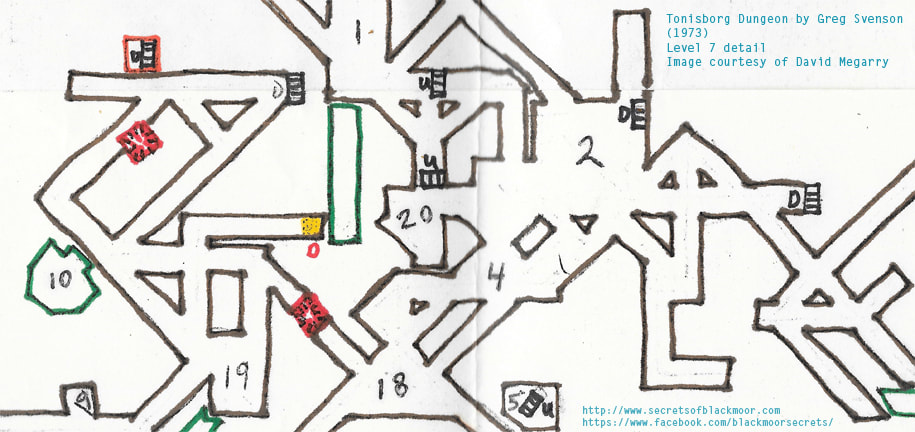
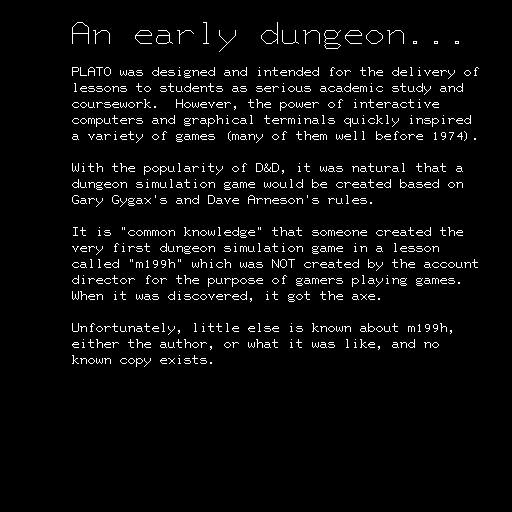
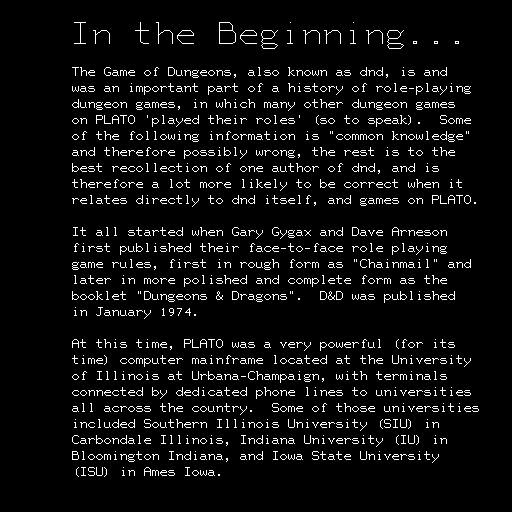
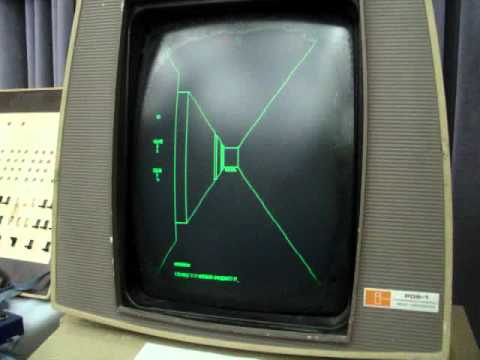
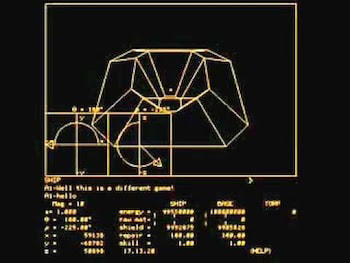

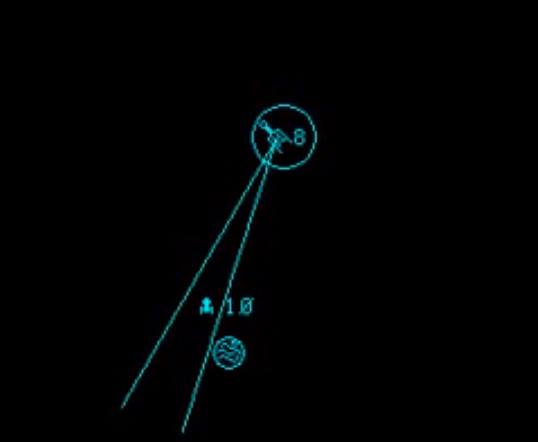

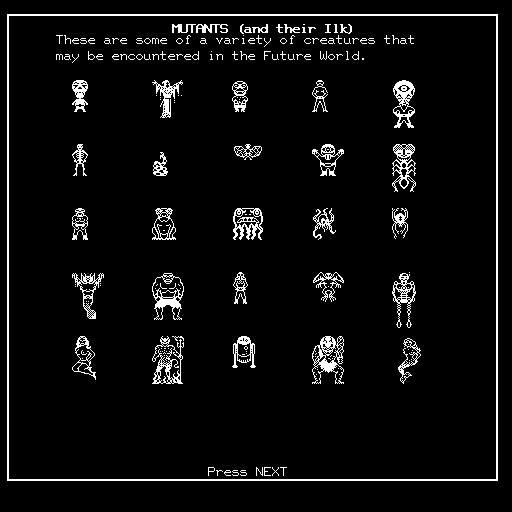
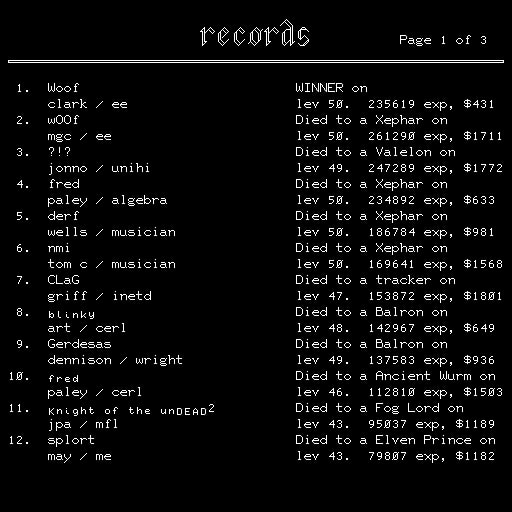
 RSS Feed
RSS Feed